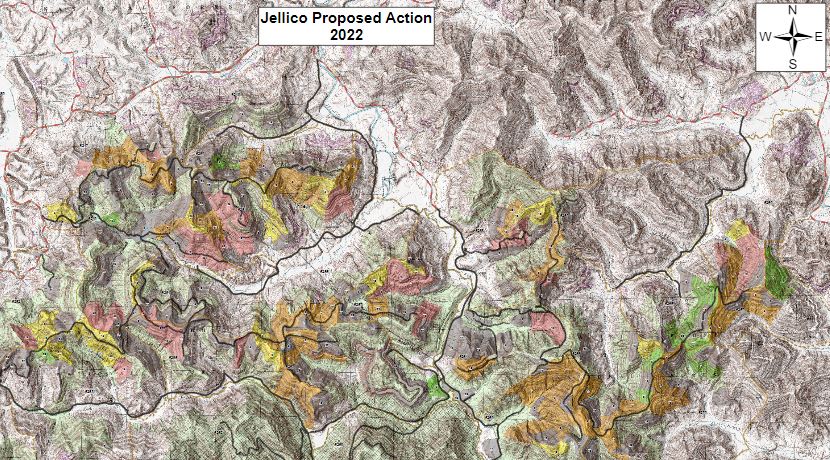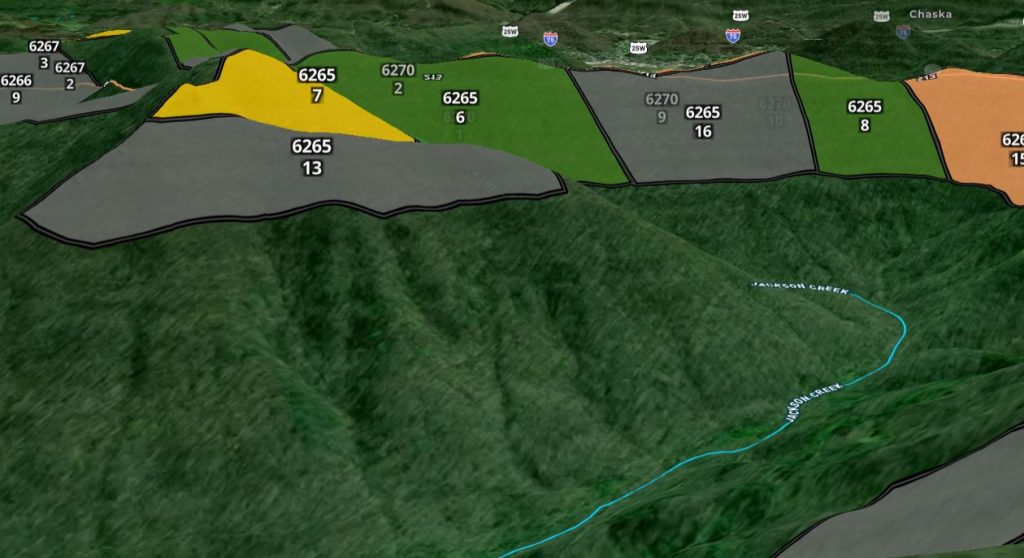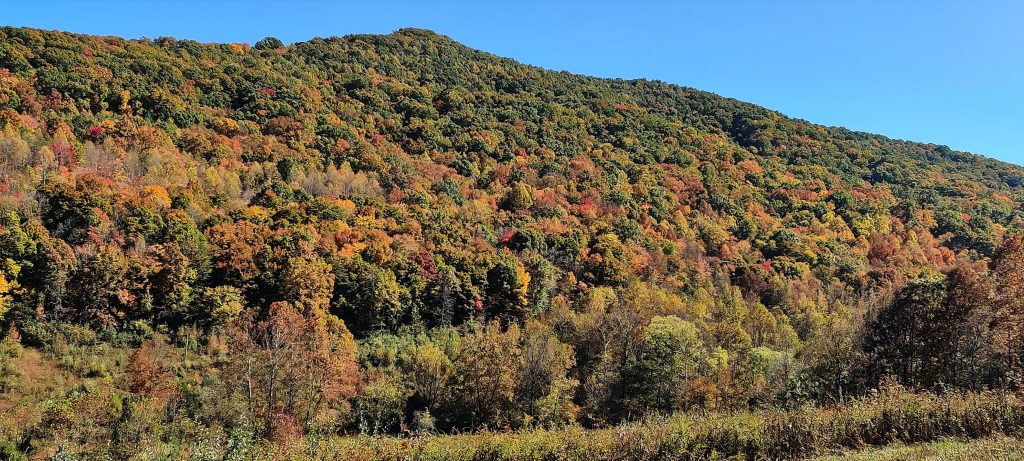The United States Forest Service (USFS) is planning a large project of logging, spraying, and road work over the next 40 years through the year 2064. Treatments would occur on 9,800 9,537 acres (15.3 14.9 square miles) across 256 252 stands in the Jellico Mountains of the Daniel Boone National Forest in southern Kentucky.

JMLOGGING.com is not a logging company!
This website was created by private citizens NOT AFFILIATED with the U.S. Forest Service, logging companies, or preservation groups. Our mission is to provide information to affected residents, so they can give informed feedback to the USFS, to help ensure this project truly benefits the forest, wildlife, and community, including the use of local businesses and labor.
For the official record on the Jellico Vegetation Management Project (#63037), please consult the U.S. Forest Service project documentation.

Events
Official Comment Period Has Ended!
You should be proud of yourselves and your community.
- 673 Total Comments
- 636 comments against the Proposed Action and/or for Alternative 1 or Alternative 2
- 37 comments supporting the Proposed Action.
To each person who submitted a comment, you did your part and had faith enough to try and make a difference. We read every comment, some long, some short, but all unique, direct, passionate, and respectful.
Now…we wait. The Forest Service will read every comment and consider all our input carefully. They are tentatively scheduled to tell us their decision in January 2025. We will stay connected with them and let you know when we hear anything.

Petition
Please sign our petition for no clearcutting in the Jellico Mountains.


Group Discussion
This website provides information related to the Jellico Mountain Project. To discuss this project with other residents and stakeholders, please check out the Facebook group:

JELLICO MOUNTAIN LOGGING FACEBOOK GROUP

3D Maps
Two-dimensional maps are useful, but they can be misleading when trying to visualize the effect of logging on steep, mountainous terrain like the Jellico Mountains. A logging tract nearby on the map might not even be visible because it’s on the other side of a mountain ridge, whereas a more distant logging tract might loom prominently in a resident’s view.
We have created a comprehensive set of detailed 3D maps that bring to life the large, flat USFS map. For example, here are the planned logging areas for Little Wolf Mountain:

We must always remember each large colored area on the map represents hundreds of trees that will be logged. Here is a similar view in real life:


Proposed Treatments
The U.S. Forest Service plans to log the Jellico Mountain area using five main treatment methods on a total of 9,800 9,537 acres. The types of treatments are represented by colored areas on the map: Clearcut 1,016 931 acres, Two Aged Shelterwood 1,869 1,805 acres, Deferment Harvest 2,462 2,434 acres, and Commercial Thinning 4,449 4,367 acres.


Potential Benefits
The USFS says most of the Jellico Mountain project area is trending towards mature forest. “While desired structures, species compositions, and age classes occur in mature forest, the biodiversity provided by young (0-30 years old) and mid-aged (31-80 years old) forest is being lost.” The Jellico Project is to “counteract this loss and increase project area biodiversity by providing a mix of habitat for flora and fauna.”

Potential Costs
Logging operations in national forests can have a significant detrimental impact on the ecological health of these vital forest systems. Erosion, sedimentation, altered stream flow patterns, disturbed and compacted soils, reduction of biodiversity, introduction of invasive species, spreading tree disease, and fragmentation of wildlife habitat are some downsides of large-scale logging operations.

Recreation
JMRA — pronounced jam-rah — is a grand vision to create a Jellico Mountains Recreation Area in the Daniel Boone National Forest along I-75 in southern Kentucky, and transform Whitley and McCreary counties into an outdoor recreation destination that will be the envy of rural America.
JMRA is a key part of our proposed citizens’ alternative to the U.S. Forest Service project to log nearly 10,000 acres of the Jellico Mountains, including herbicide use and over 5,000 acres of effective clearcut on mostly steep slopes.

Kentucky Heartwood
Kentucky Heartwood is a National Forest watchdog group that “seeks to protect and restore the integrity, stability, and beauty of Kentucky’s native forests and biotic communities through research, education, advocacy, and community engagement.” The non-profit organization recently sued the USFS over a similar logging project in the South Red Bird area.
We likely would have never heard about the Jellico Project if it wasn’t for a newsletter we received from Kentucky Heartwood. The authors of this website are not affiliated with Kentucky Heartwood except as donors.

News
- Gutting of the Forest Service will cause irreparable damage to wilderness character
- Canada is where the trees are
- ‘Sustainable’ logging operations are clear-cutting Canada’s climate-fighting forests

Research
- A century of reforestation helped keep the eastern US cool, study finds
- Scientists issue warning against commercial tree-planting schemes: ‘We should shift focus’
- Forests with multiple tree species are 70% more effective as carbon sinks than monoculture forests, study finds

Our Position
We are a bipartisan group of concerned citizens who are not anti-logging, however we are against irresponsible logging. We understand that selective logging and other treatments — when done in a balanced way in the right places with follow-up care — can improve forest health, reduce fire danger, and remove invasive species.
However, we are concerned with the size and scope of this project, its impact on old-growth forests and wildlife, large amount of clear cutting, herbicide use, and the potential for erosion, landslides, flooding, water quality, noise, traffic, endangered species, increased invasive species introduction, and loss of biodiversity in our community.
U.S. National Forests belong to the American people. Each American citizen is a joint owner of these natural treasures, so it’s in all our best interest to use them wisely. The U.S. Forest Service must balance recreation, resource extraction, and preservation in our national forests. Big business naturally favors extraction, so it’s important that affected residents and other concerned citizens are also represented in planning the Jellico Mountains Project.
Thank you for taking the time to read this information. May the forest be with you.
